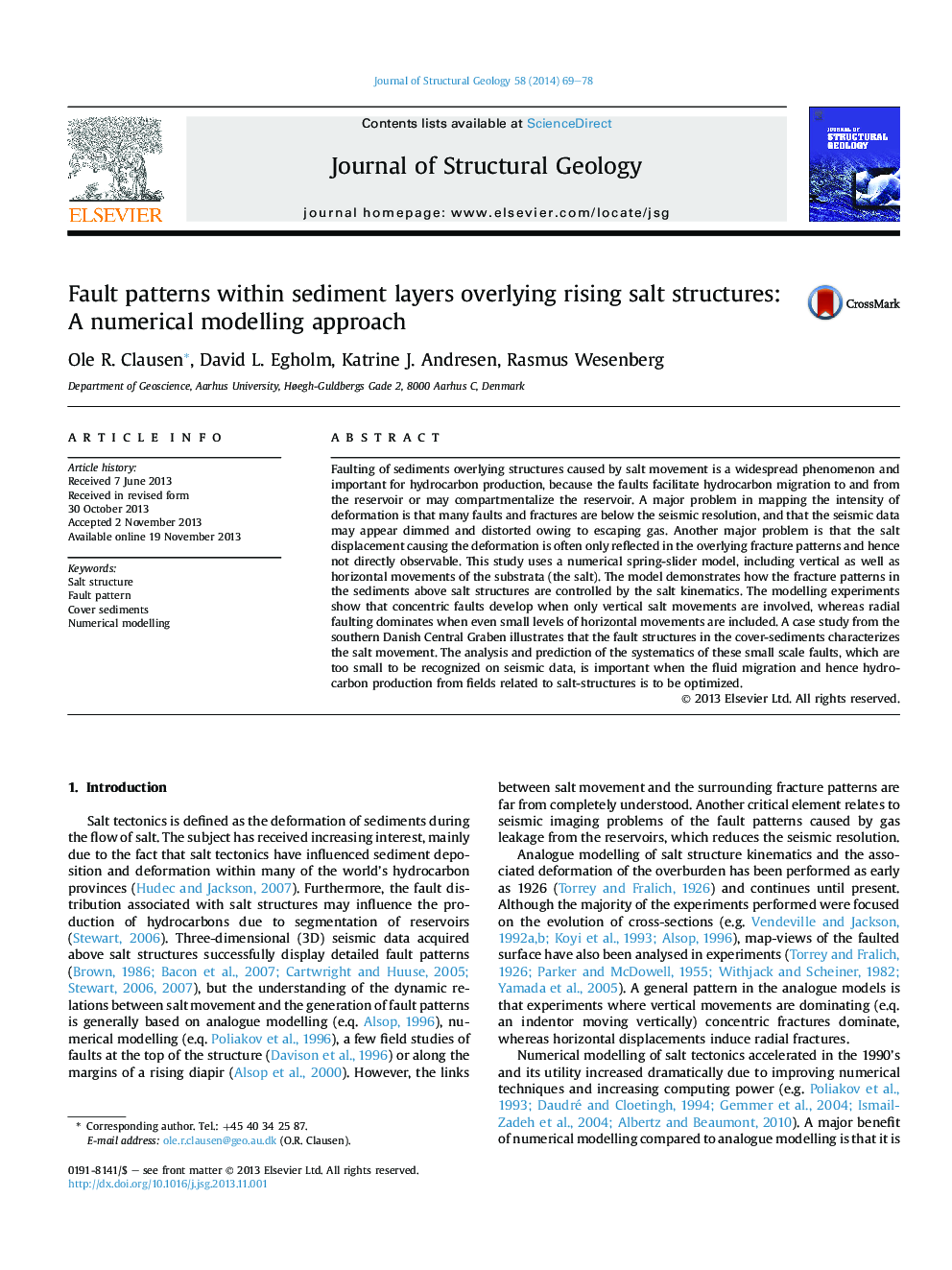| Article ID | Journal | Published Year | Pages | File Type |
|---|---|---|---|---|
| 6444971 | Journal of Structural Geology | 2014 | 10 Pages |
Abstract
Faulting of sediments overlying structures caused by salt movement is a widespread phenomenon and important for hydrocarbon production, because the faults facilitate hydrocarbon migration to and from the reservoir or may compartmentalize the reservoir. A major problem in mapping the intensity of deformation is that many faults and fractures are below the seismic resolution, and that the seismic data may appear dimmed and distorted owing to escaping gas. Another major problem is that the salt displacement causing the deformation is often only reflected in the overlying fracture patterns and hence not directly observable. This study uses a numerical spring-slider model, including vertical as well as horizontal movements of the substrata (the salt). The model demonstrates how the fracture patterns in the sediments above salt structures are controlled by the salt kinematics. The modelling experiments show that concentric faults develop when only vertical salt movements are involved, whereas radial faulting dominates when even small levels of horizontal movements are included. A case study from the southern Danish Central Graben illustrates that the fault structures in the cover-sediments characterizes the salt movement. The analysis and prediction of the systematics of these small scale faults, which are too small to be recognized on seismic data, is important when the fluid migration and hence hydrocarbon production from fields related to salt-structures is to be optimized.
Keywords
Related Topics
Physical Sciences and Engineering
Earth and Planetary Sciences
Geology
Authors
Ole R. Clausen, David L. Egholm, Katrine J. Andresen, Rasmus Wesenberg,
